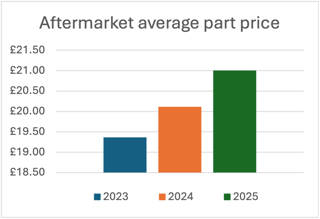MHA MacIntyre Hudson’s Motor Specialist Team has seen a significant rise in HMRC enquiries at both franchised car dealerships and car supermarkets.
The Department’s activity is yielding results with many dealers becoming embroiled in uncomfortable and damaging VAT disputes.
HMRC’s current focus is on the values declared by dealers through their Dealer Management Systems (DMS) compared to those used to obtain finance for PCP customers.
Historically, this has some similarity to the practice of ‘bumping’ where a dealer deliberately showed a higher value on invoices issued to finance companies for a car sale, offset by a similarly higher value for the customer’s part exchange vehicle.
The net amount to be financed was unchanged, and the practice was usually carried out to meet lending criteria by overstating the true value of the customer’s initial contribution.
However, the current variation on this theme, arises from the role of finance house systems into which a sales consultant enters the details of a transaction in order to secure finance for their customer.
Those systems vary in both quality and the level of training given to dealers and the resulting VAT issues have become known as the ‘E-sig problem’, named after the electronic signature, required from the customer to obtain the finance.
Typically, a sale will incorporate many different elements, all of which need to be entered accurately to ensure that documents match the correct VAT treatment.
Those include: the sale price of the car; discounts and deposit contributions; whether it is a qualifying car (in the context of second-hand vehicles); the customer’s cash deposit; part-exchange values; GAP insurance; negative equity and RFL.
A busy sales consultant’s main interest is in securing enough finance to make the sale and is often faced with using numerous finance systems, some of which are poorly designed.
All too frequently, non-VATable items such as GAP insurance, RFL and negative equity are included within the sale price of the new car, because the sales consultant knows that this will produce the right amount of finance.
What the consultant doesn’t realise is that the values entered are used by the finance house to produce an invoice on the dealer’s behalf. The values on that document will not match the invoice produced by the dealer’s own DMS, on which each of the different elements of the sale are correctly analysed.
The VAT problem arises because the accounts team at the dealer declare VAT according to the DMS document, but under PCP a car is contractually sold to the finance company.
HMRC unsurprisingly regard the vehicle invoice produced by the finance house as being the true figure for VAT purposes.
The amounts involved are significant.
HMRC are regularly issuing assessments in excess of £100,000 at mid-sized dealerships. With that level of easy pickings, it is little wonder that the sector has become a regular target for the VATman.
Of course, this also leads to HMRC looking closely at any other potential errors and they now arrive at a dealership with a shopping list of potential VAT underdeclarations.
So what can be done? The ideal starting point is to ensure that finance deals are entered onto systems accurately.
This means investing time training sales consultants and ensuring that there is good communication between accounts, sales and lenders to ensure that everyone understands their respective responsibilities.
Dealers who have not yet been contacted should anticipate a VAT inspection and start to test systems.
Early advice from specialists can help resolve the problem before or during an enquiry – HMRC know some of the solutions, but disappointingly they are not always willing to share possible ways in which their assessments can be mitigated.
Author: MHA MacIntyre Hudson VAT director, Glyn Edwards


















Login to comment
Comments
No comments have been made yet.